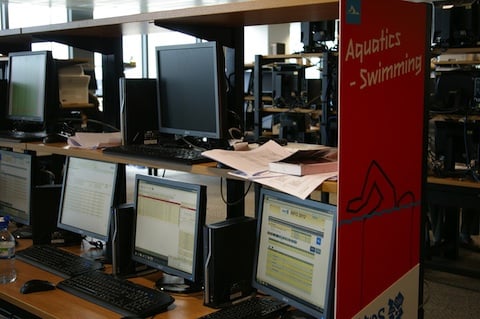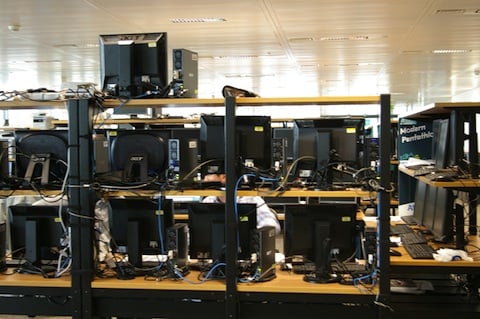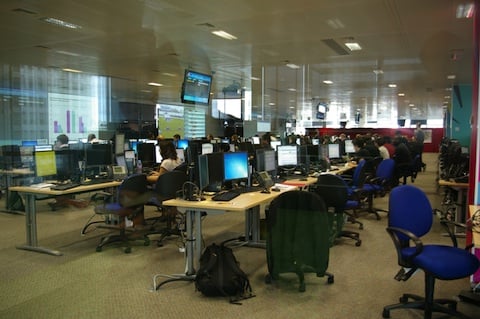This article is more than 1 year old
London 2012 Olympics: 17000 athletes, 11000 computers
Acer: 'It won't run on Vista like we said it would'
Other tech partners
Omega are providing the timing and scoring for the 2012 Olympics, Panasonic will provide large screens, Atos are making software applications, BT and Cisco are providing the communications networks while Samsung is providing wireless devices. Visa is tucked in there too. And they're all working together nicely we understand: "LOCOG have done a good job in bringing all the tech partners together, on at least a monthly basis – at upper management level. We're integrated even more lower down," said Trainor.
The software used is a mixture of off-the-shelf programs and custom-made applications.
How it will unfold in the Olympic run-up.
In the Integration room, all the tech partners pull together to set up systems that work. The sections are split up into types of sport: archery, football, etc, as well as particular venues.

Part of a computer cell in the Integration room, ready to be packed up and sent off to the Olympic Village.
In May to June, the cells of computer set-ups will be packed up, sent out to the venue, and tested out with test events. If any problems occur, they'll be packed back up, sent back, re-tested and sent out again. The average cell of about 30 to 40 computers is intended to fit in one pallet.
"Two to three weeks in advance, these rooms will be decommissioned, packed and transported over to the venues, where they will be unpacked, reconfigured for an on venue review and tested with test events. If there's a problem, we bring them back here, fix them here, send them back. That's why our distributed PC is so useful. Workstations wouldn't travel so easily."

Banks of computers being tested in the Integration room.
The Tech Operations Centre
Now housing about 40 to 50 people, during the Games this room full of computers and screens will be the control centre of Olympic operations: open 24 hours a day with about 350 to 400 people working every shift. The 400 people will be from all the tech partners, not just Acer, with the idea that those responsible will be able to respond quickly to anything that comes up.
"It's a very operational room. We'll be moving from project-based thought processes to operational work. You'll be able to get up, go to someone and say, 'get it done'," Olsen explained.
When we visited, 70 people were in there, doing a trial run using an archery event running at Lords. When we asked what they were all doing, we were told "Monitoring. They're monitoring everything."

The Technical Operations Centre: The control centre of the 2012 Olympics.
The Olympic Village – from inside a bus.
Beyond the technology and onto the bigger picture. Here are a few snaps of the Olympic Village, snatched through the window of a bus we were strictly forbidden from exiting. We apologise for the glassy stuff in the way.
Fun facts from the Olympic Village tour.
- Newts and toads have been reintroduced into the local waterways.
- The portion of the River Lea that runs through the park will be closed off during the Games.
- Anyone even trying to bring a car to the Olympic Village during Games time will *not* be able to park it. "It will not be a very nice experience for the people who try to do that," our tour guide promised.
- Everyone will encouraged to attend the games on public transport. Apparently 10 train lines will end in the Olympic Village... We'll just say good luck with that.
- The building work has been paid for by the UK taxpayer – to the tune of £9.3bn.
- The operational running costs are paid for by the London Organising Committee for the Olympic Games (LOCOG) – an umbrella group that pulls in money from the private sector – £2.2bn – and recoups costs against ticket sales.
